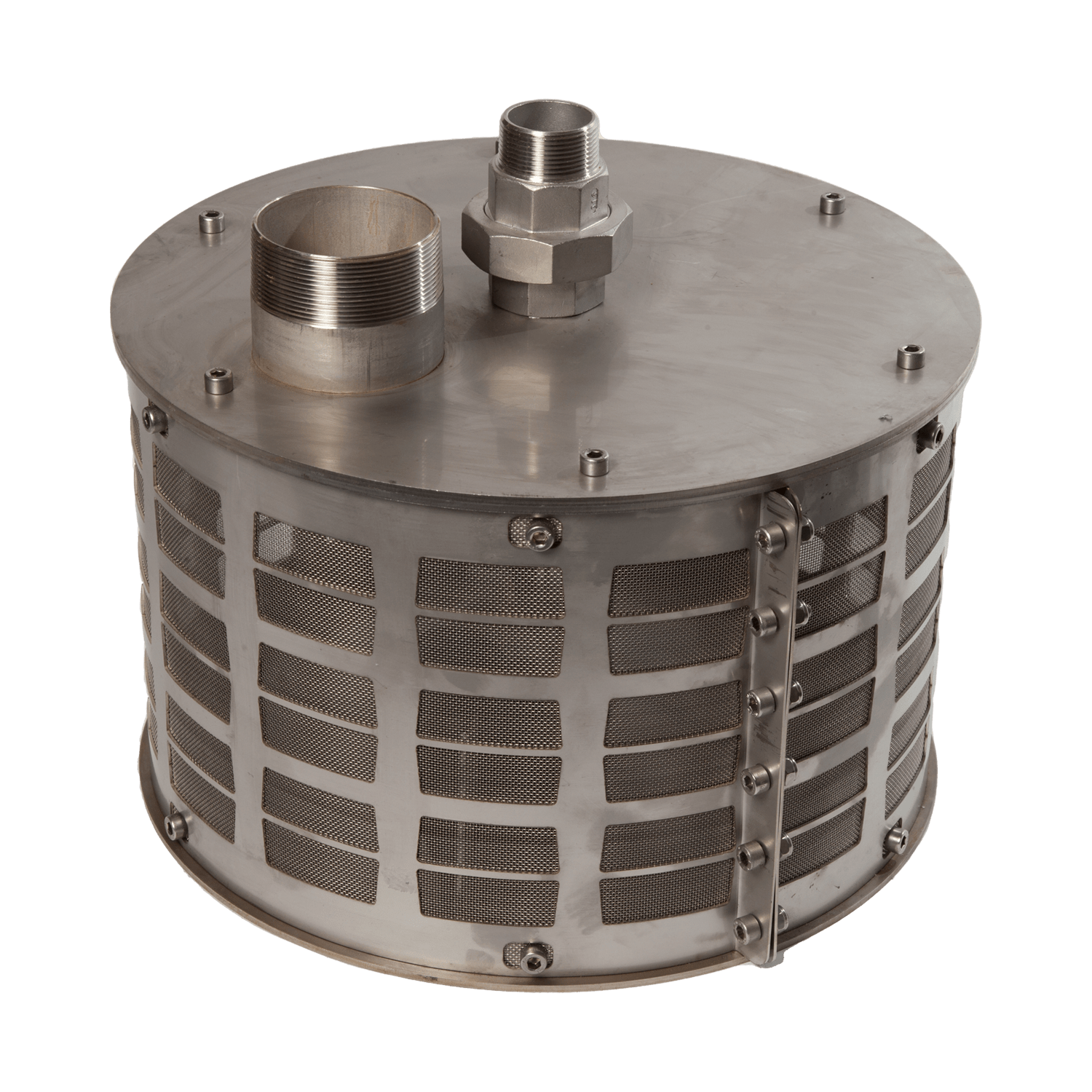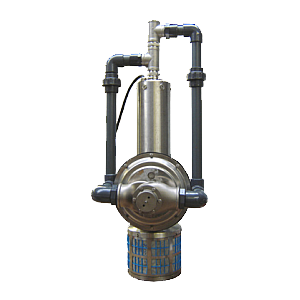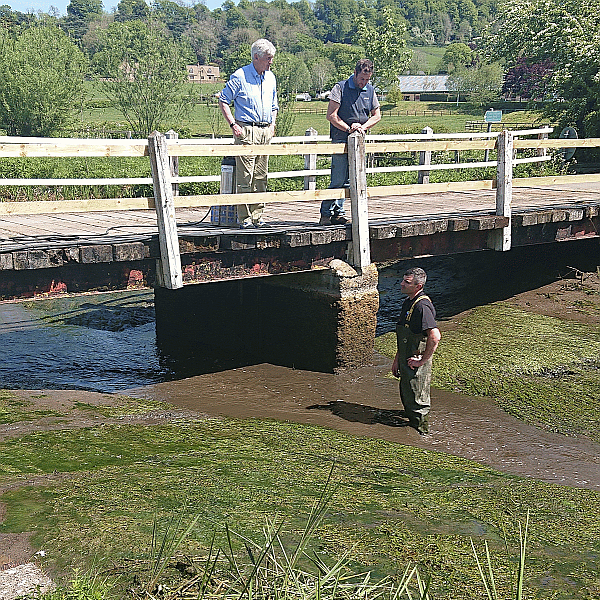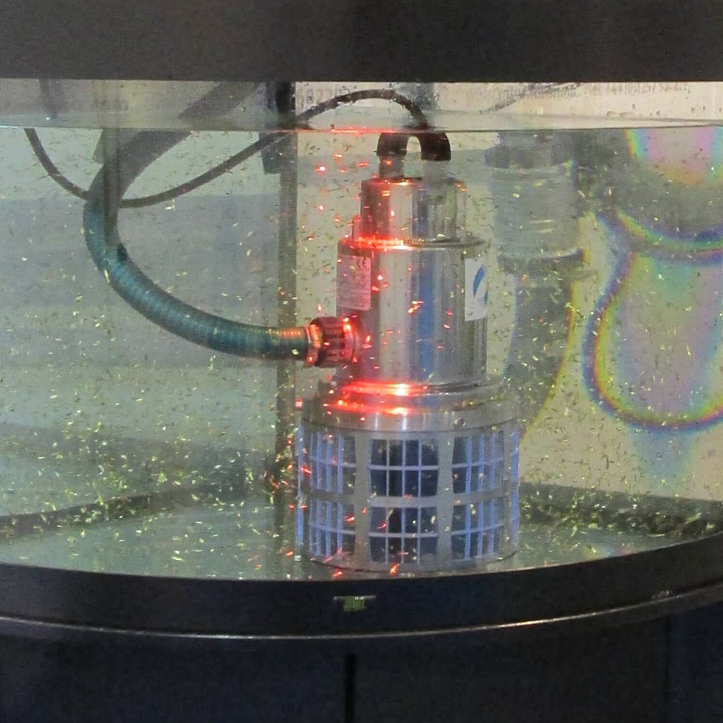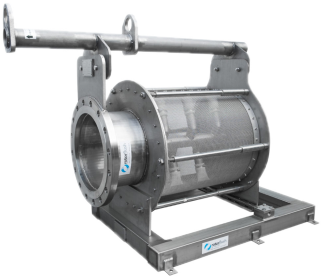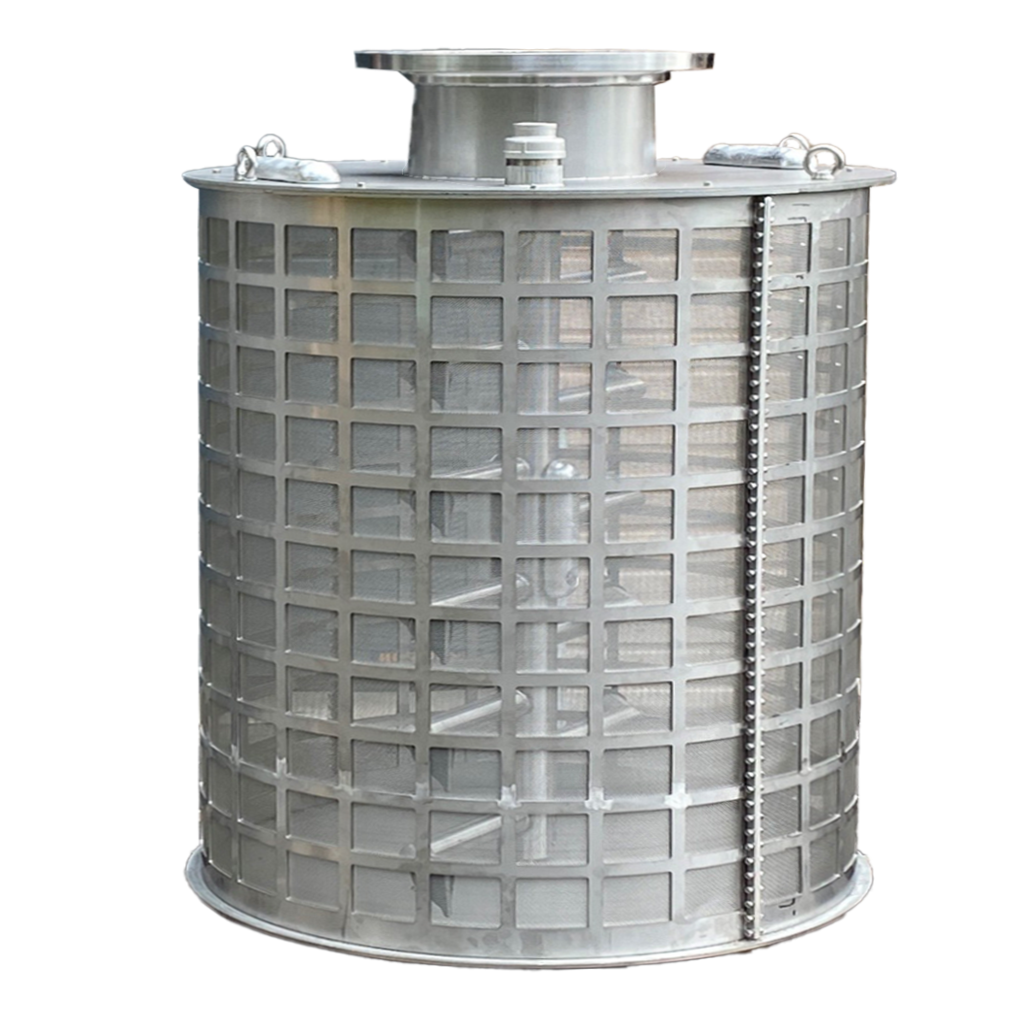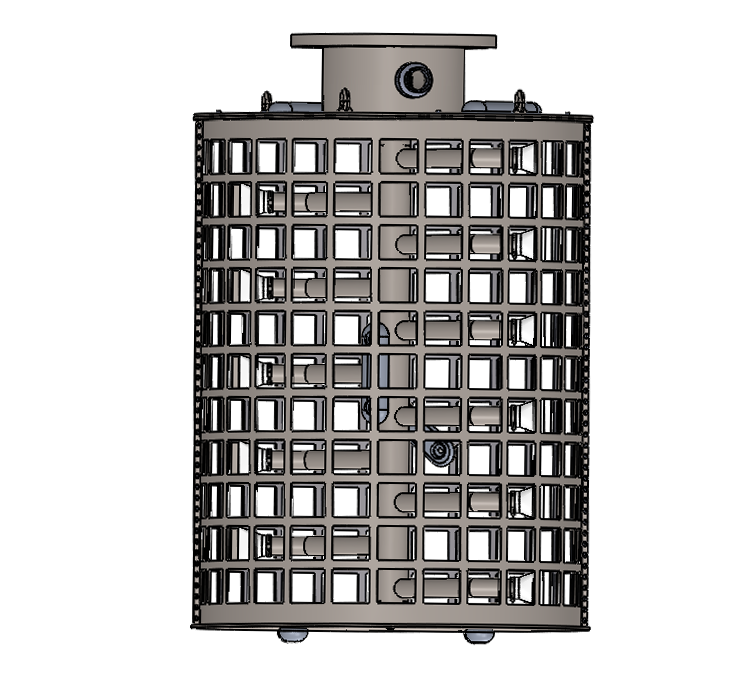RF1100AR Self-cleaning Strainer
Self-cleaning Industrial Water Filters and Strainers. RF1100AR self-cleaning intake strainers are for attachment to the suction hose of surface mounted pumps. These tough, 1100 mm diameter, industrial, all stainless-steel construction, mechanical filters can deliver up to 1,265 m3/hour, 5,570 US GPM
Key Features
RF1100AR Self-cleaning Strainer
Specifications & Dimensions
Specification
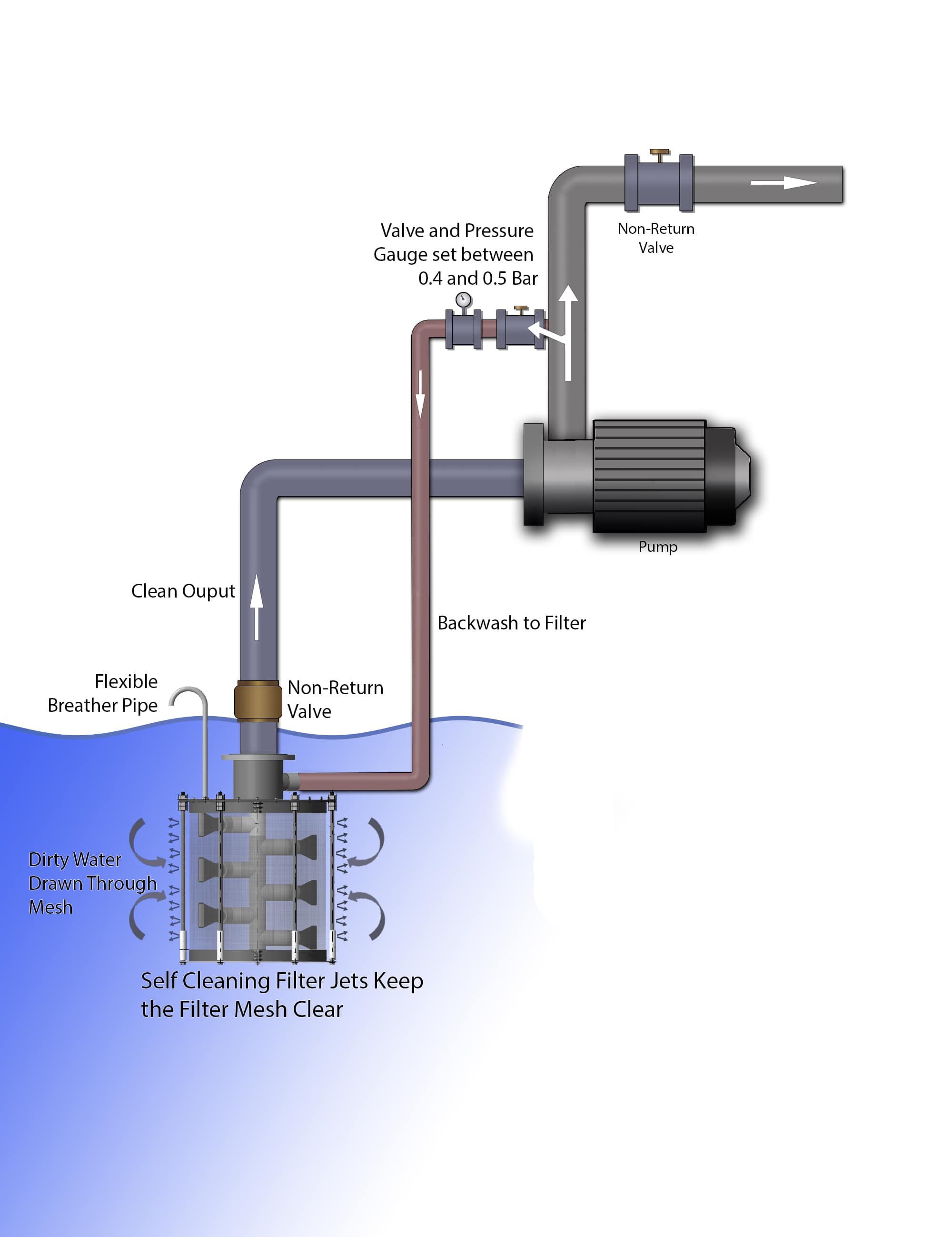
Dimensions
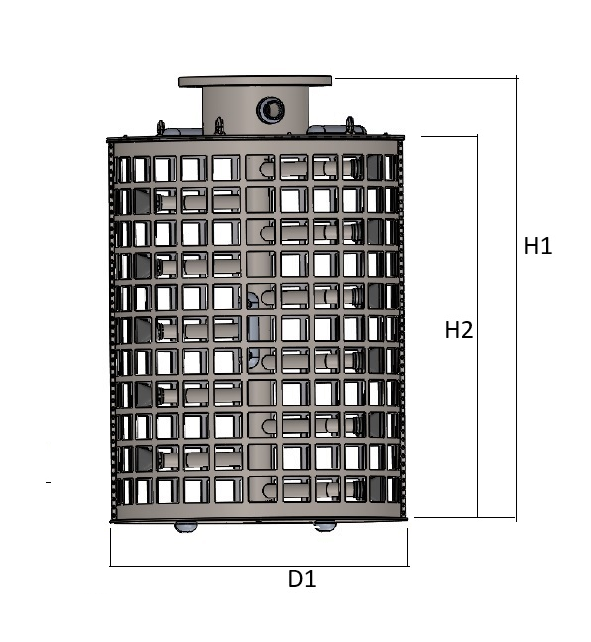
Prices & ordering
- All Models
- RF1100-200AR
- RF1100-300AR
- RF1100-400AR
- RF1100-500AR
- RF1100-600AR
- RF1100-700AR
- RF1100-800AR
- RF1100-900AR
- RF1100-1000AR
- RF1100-1100AR
Downloads
Similar Products
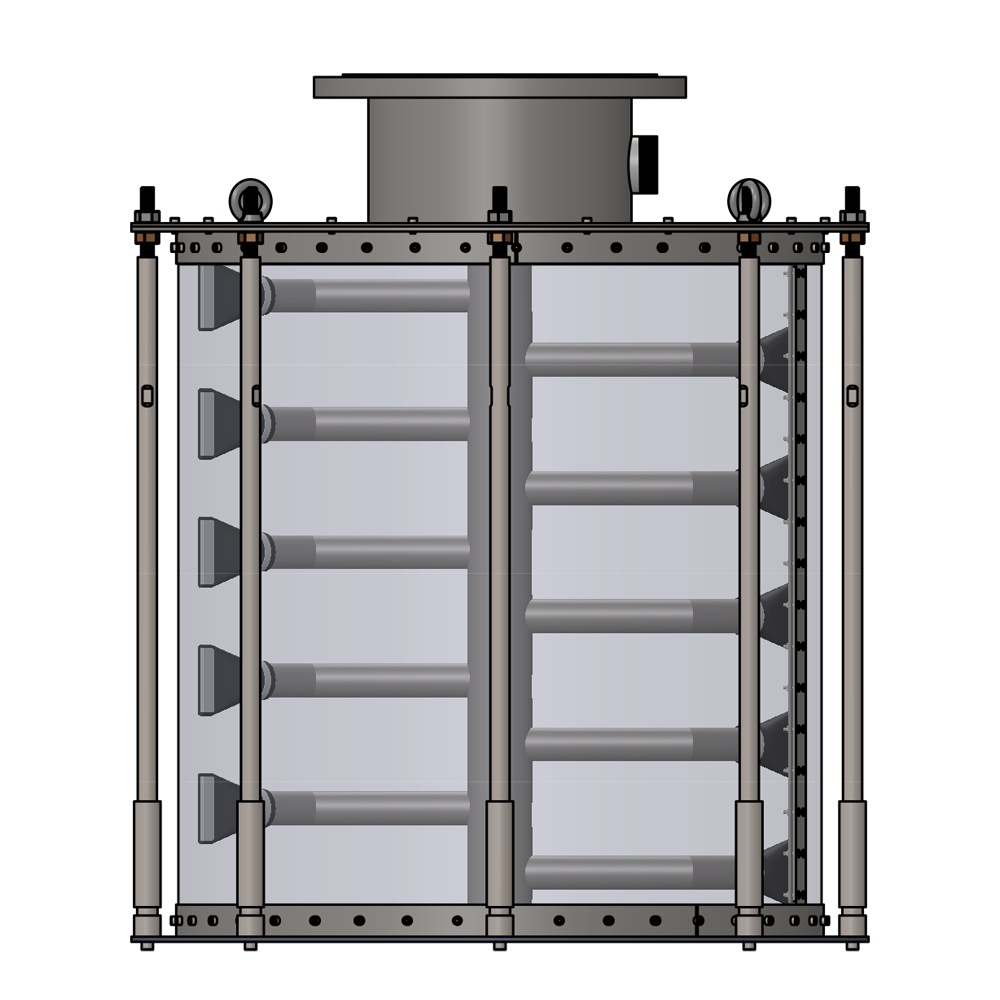
RF1000LW Self-cleaning Intake Strainers and Eel Screens
Self-cleaning Industrial Water Filters & Strainers. RF1000LW Suction Intake Strainers and Eel Screens, 1000 mm in diameter, for use in raw and contaminated water. Industrial strength, low maintenance, all stainless steel self-cleaning basket strainers to prevent blocking and blinding during water abstraction. These intake screens handle up to 1,357 m3 / hour, 5,975 US GPM (when fitted with 2 mm mesh).
- Screen up to 1357 m3 / hour, 5975 US GPM
- Filter from 6 mm down to 1 mm
- US Mesh 3 down to 18
- Ideal for Raw Water Intakes
Price from: £0
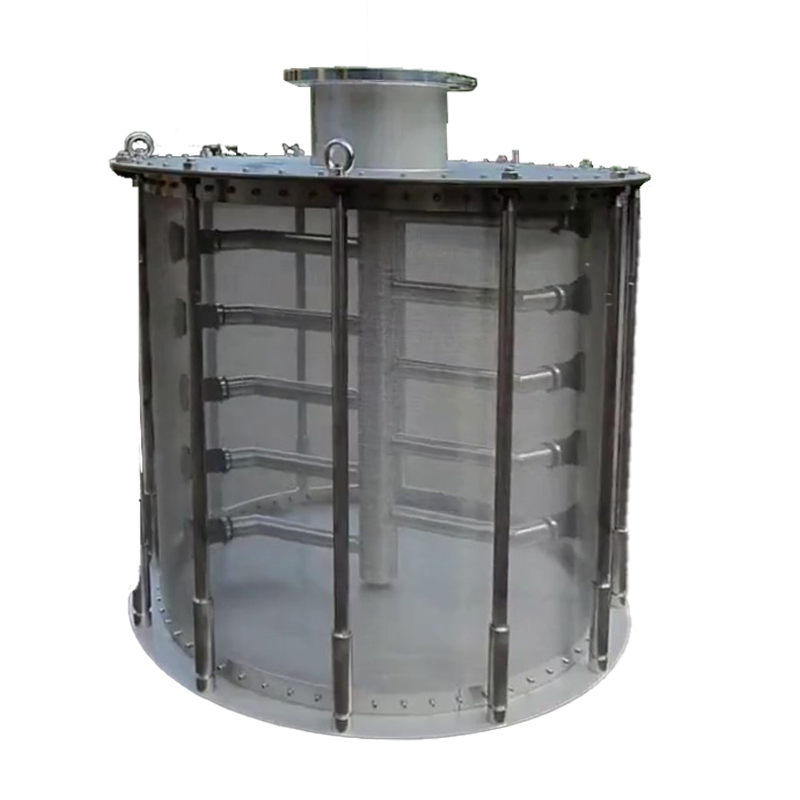
RF1100LW Self-cleaning Strainers and Eel Screens
RF1100LW Self-cleaning Strainers and Eel Screens. Our largest standard RF1100LW industrial, stainless steel, self-cleaning strainers (larger bespoke sizes can be made to order). These low maintenance suction side intake screens will handle up to 1642 m3/hour, 7230 US GPM when fitted with 2 mm aperture mesh.
- Screen up to 1642 m3 / hour, 7230 US GPM
- Filter from 6 mm down to 1 mm
- US Mesh 3 down to 18
- Ideal for Fish and Eel Screening
Price from: £0
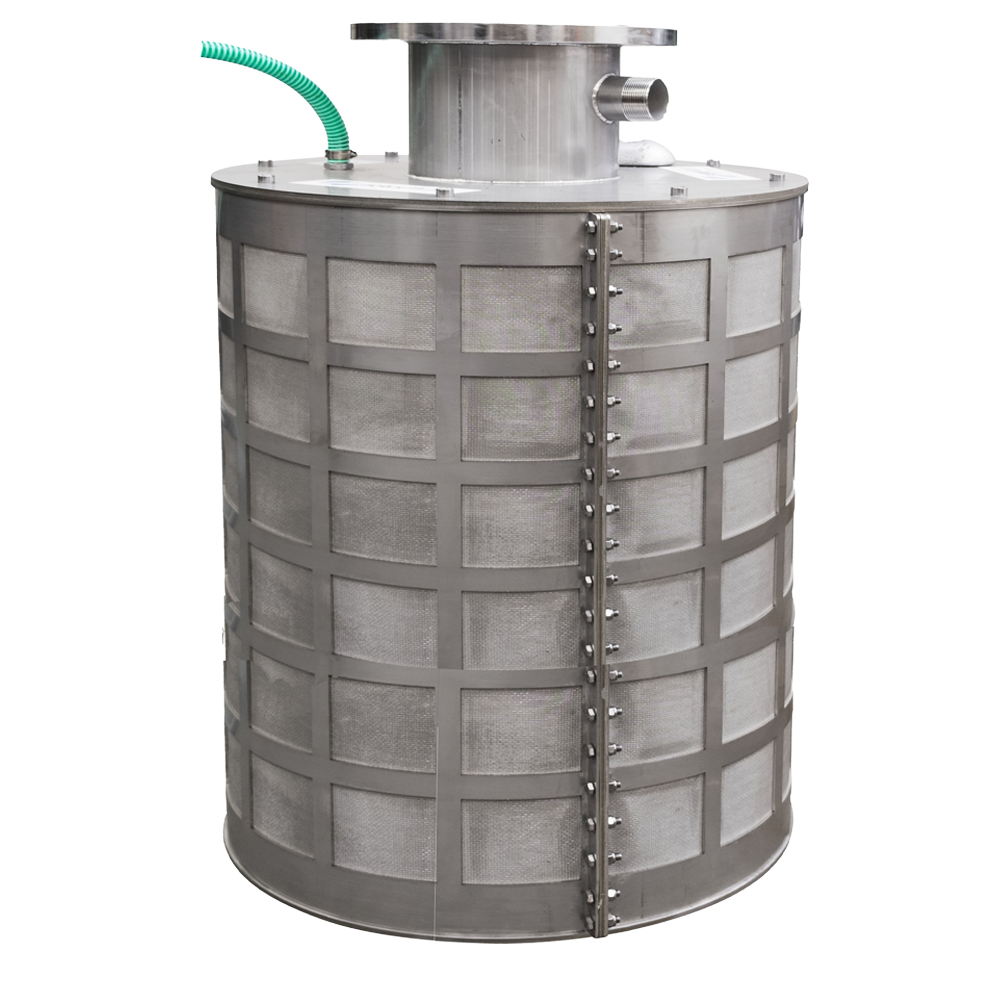
RF1000AR Self-cleaning Strainer
RF1000AR Self-cleaning Industrial Water Filters and Strainers. 1000 mm diameter self-cleaning intake strainers for attachment to the suction hose of surface mounted pumps. These tough industrial all stainless-steel construction mechanical filters can deliver up to 1,045 m3/hour, 4,600 US GPM
- Screen up to 1045 m3 / hour, 4600 US GPM
- Filter from 6 mm down to 1 mm
- US Mesh equivalent 3 down to 18
Price from: £0
General Information about RF1100AR self-cleaning basket strainers
Self-cleaning Industrial Water Filters and Strainers used for pumping dirty or contaminated water.
RF1100AR filters are general purpose suction intake basket strainers with a built-in self-cleaning mechanism that back-washes their mesh as your pump draws water. These are all stainless steel, very strong screens capable of screening high volumes of contaminated or raw water. The designation RF1100AR indicates 1100 mm diameter screens and filters fitted with woven steel mesh.
Dirty water can now be screened at source, helping to prevent the intake, pump and any connected equipment from blocking. These 1100 mm diameter self-cleaning intakes attach to the suction of surface mounted pumps.
Here are some typical uses of these filters:
- Irrigation and livestock watering
- Cooling water screening for EPA Rule 316 (b) and Eel Regulations compliance
- Screening industrial process water
- Screening water when draining / flooding wetlands
- Protecting district wide heat pump installations
- Screening for desalination plant intakes
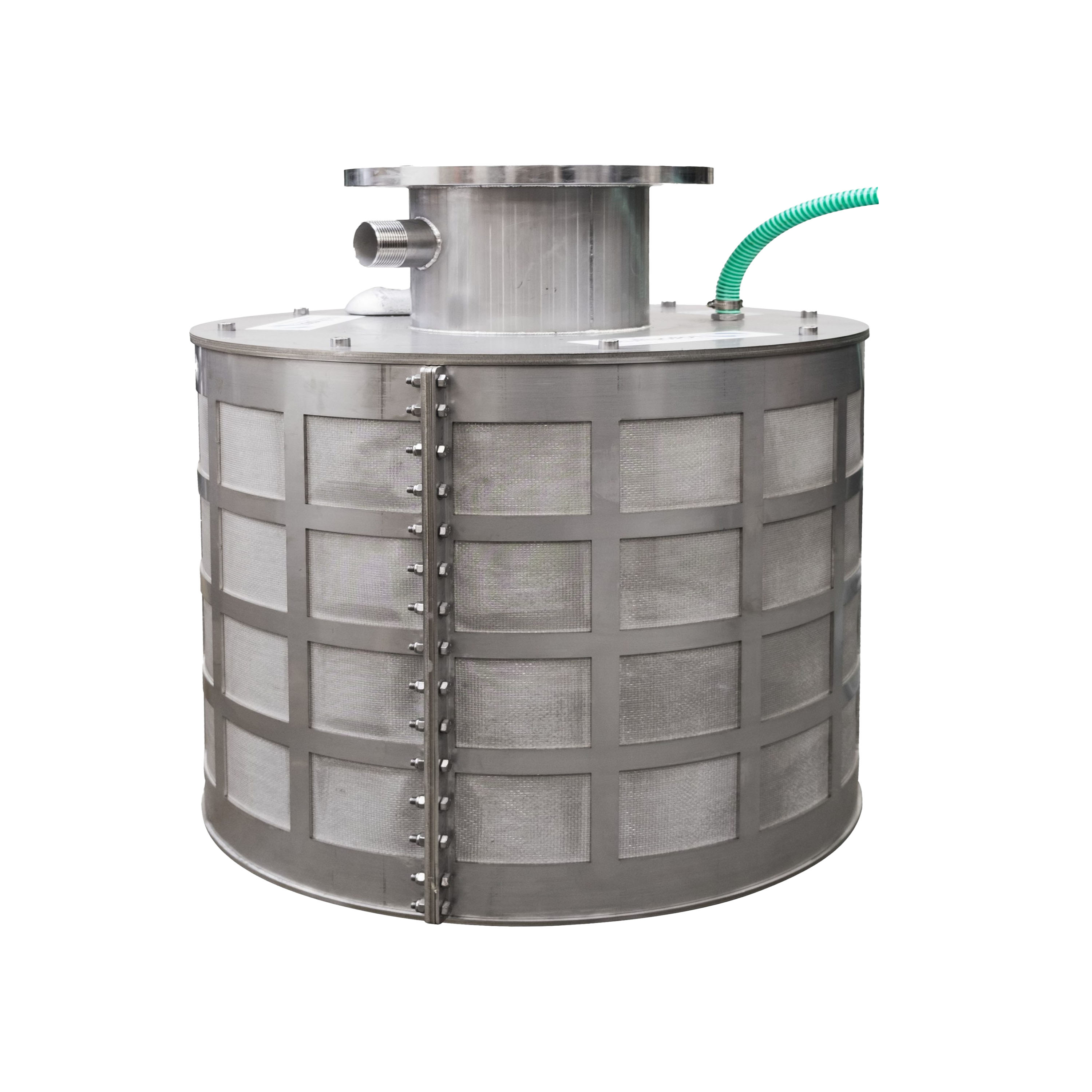
RF1100-400AR Self-cleaning intake, 2 mm mesh
Self-cleaning water intake screens - ‘AR’ type screens or ‘LW’ type screens?
The difference between a self-cleaning intake screen or filter designated AR, and a self-cleaning intake screen or filter designated LW is in their construction.
‘AR' type strainers and filters are made with a cage frame around which filter mesh is wrapped. This is held in place by a clamp. The filters are easily identifiable as ’AR' type, as the filter mesh area comprises a series of mesh windows.
‘LW’ type strainers and filters do not have a cage body; the mesh is the filter body. The filter mesh is tensioned between the filter top and bottom plates, and is tight - like a drum skin. This gives the mesh structural integrity and strength. ‘LW’ filters are easily identifiable as the body is all mesh.
What's the diff?
The ‘AR’ type self-cleaning filters and strainers are very strong - the body being made up of a cage and a clamp - two layers of steel - and are suitable where conditions are challenging such as turbulent river or seawater locations .AR filters up to 600 mm diameter can be fitted with mesh down to 315 microns, larger sizes star at 1 mm mesh.
The downside is that they handle less water for the size of screen, because the open area of the mesh is reduced by the cage and clamp.
LW filters can only be fitted with mesh of 1 mm or greater aperture. This is because the mesh needs to be robust enough to tension. The ‘LW’ type self-cleaning filters and strainers are also strong - but are more suited to applications and settings where low intake velocities are required - for example for fish or eel screening at cooling water and raw water intakes.
The on the plus side they handle more water than the ‘AR’ type filters for the same size of screen, because the open area of the mesh is maximised; the mesh is area is not reduced by a supporting cage or clamp.
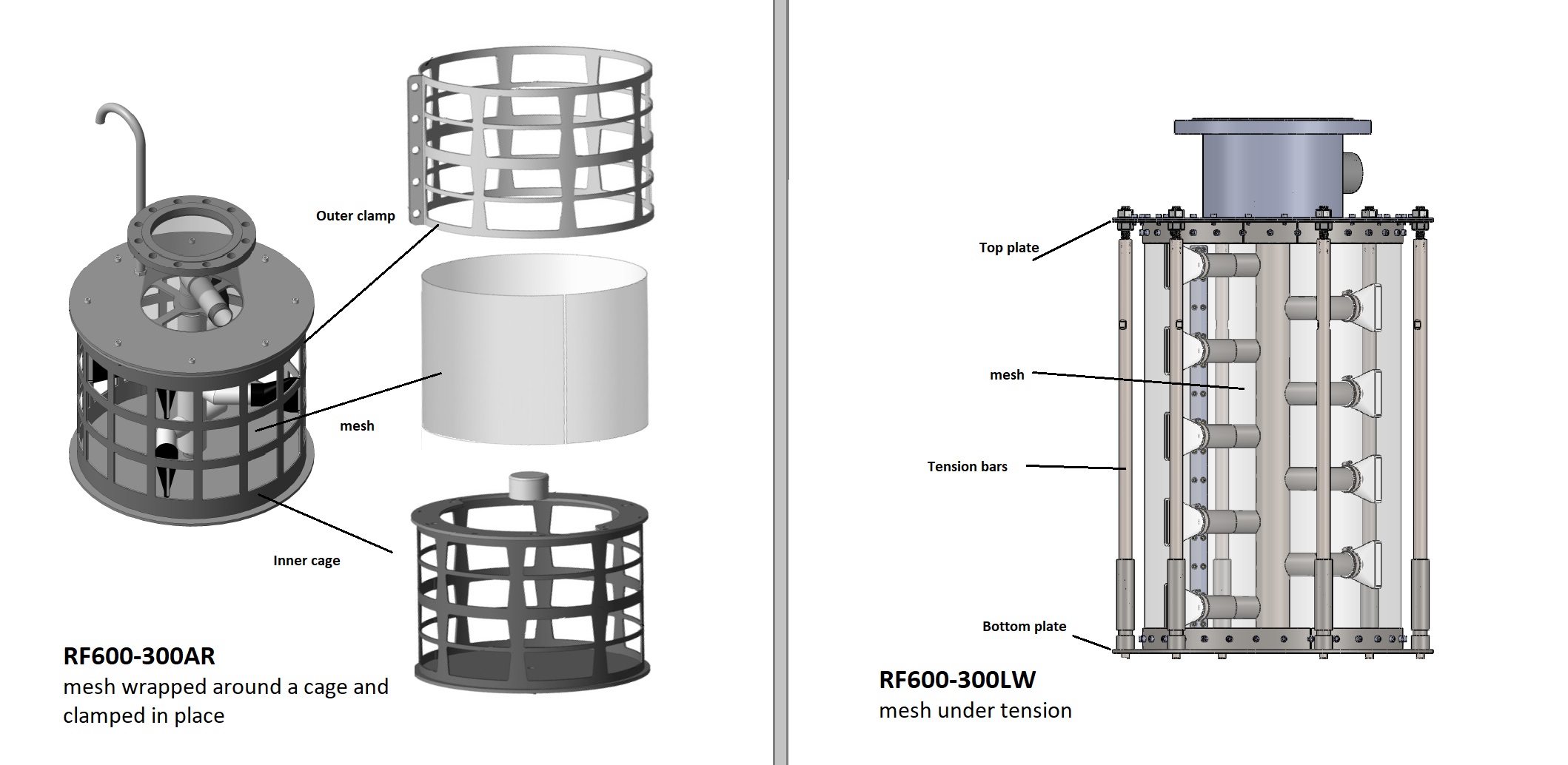
'AR' type self-cleaning strainers and filters compared with 'LW' type self-cleaning strainers and filters
Rotorflush RF1100AR self-cleaning suction intakes can be fitted with:
316 stainless Woven Mesh
A coarse woven mesh screen providing low maintenance cycles, filters and screens with coarse mesh come fitted with rubber backwash jets which are suitable for handling larger particles. Ideal difficult water conditions.
Mesh apertures available: 1 mm, 2 mm and 3 mm
These self-cleaning basket strainers are ideal for screening industrial process water, raw water, seawater and general heavy industrial uses. They are ideal for fish protection and eel screening as they have a low intake velocity.
The strainers are all stainless steel, and very heavy - lifting gear is required to move them. RF1100AR self-cleaning intakes for pumps can be suspended in tanks, sumps or ponds or from buoys, or raised and lowered on a guide-rail system. They can often be bolted directly on to the intake of vertical and immersible pumps.
For best performance, make sure that there is good clearance around the strainer mesh so that back-washed debris can disperse, and that the RF1100AR is above any silt or sludge that may accumulate.
We can manufacture bespoke stands and guide rails specifically designed for our products to help you site and maintain them.
Usually very little. Although they are self-cleaning all of our products will require a manual clean every once in a while.
The nylon mesh inserts are easily replaced, and stainless mesh can be cleaned with a pressure washer. How often depends on your mesh size and what you are filtering.
As a minimum, we recommend the following:
- Mesh that is 1 mm or bigger should be inspected and cleaned every 6 - 12 months
- Inspect more frequently in the first 6 months to ensure an optimal maintenance regime
Full maintenance guidelines can be found in the instruction manual available from the download link above.
All our products are guaranteed for at least a year. Full details in our Terms and Conditions.
Why Rotorflush?
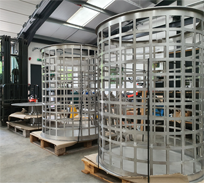
Designed & Manufactured in the UK
All our products are made to order, and many can be made to customer specifications.
- Built to meet your requirements
- Screen dirty water down to 50 microns
- Made to order in the UK
- All stainless steel construction
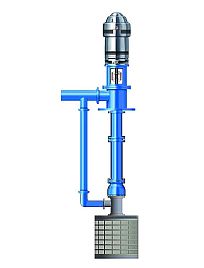
Experts in Water Screening and Filtration
Our products and expertise have been appreciated by satisfied customers for over 2 decades.
- Industry experts for over 20 years
- 1000's of products in use worldwide
- Successfully screening 10 - 7,225 US GPM / 2 - 1,640 m3 hr
- Our products keep water flowing by protecting pumps, screens, spray bars…….
- .…nozzles, heat exchangers and other connected equipment from blocking

Worldwide delivery and service
Through our worldwide distribution network, we offer the ability to:
- Deliver filters and strainers worldwide
- Help service your filter or strainer
- Repair a broken filter or strainer (whatever you've done to it…)
Speak to one our knowledgeable staff...
Call us now on 01297 560 229 | 8am - 5pm GMT,
or Email sales@rotorflush.com and a member of our expert, friendly team will call you back and find the filter or strainer for your needs.
- We work with you to identify your issues
- We can design & build a custom solution
- We can deliver our solution worldwide

We'll help you find the right RF1100AR for you
or tell us which RF1100AR filter you'd like to know more about.
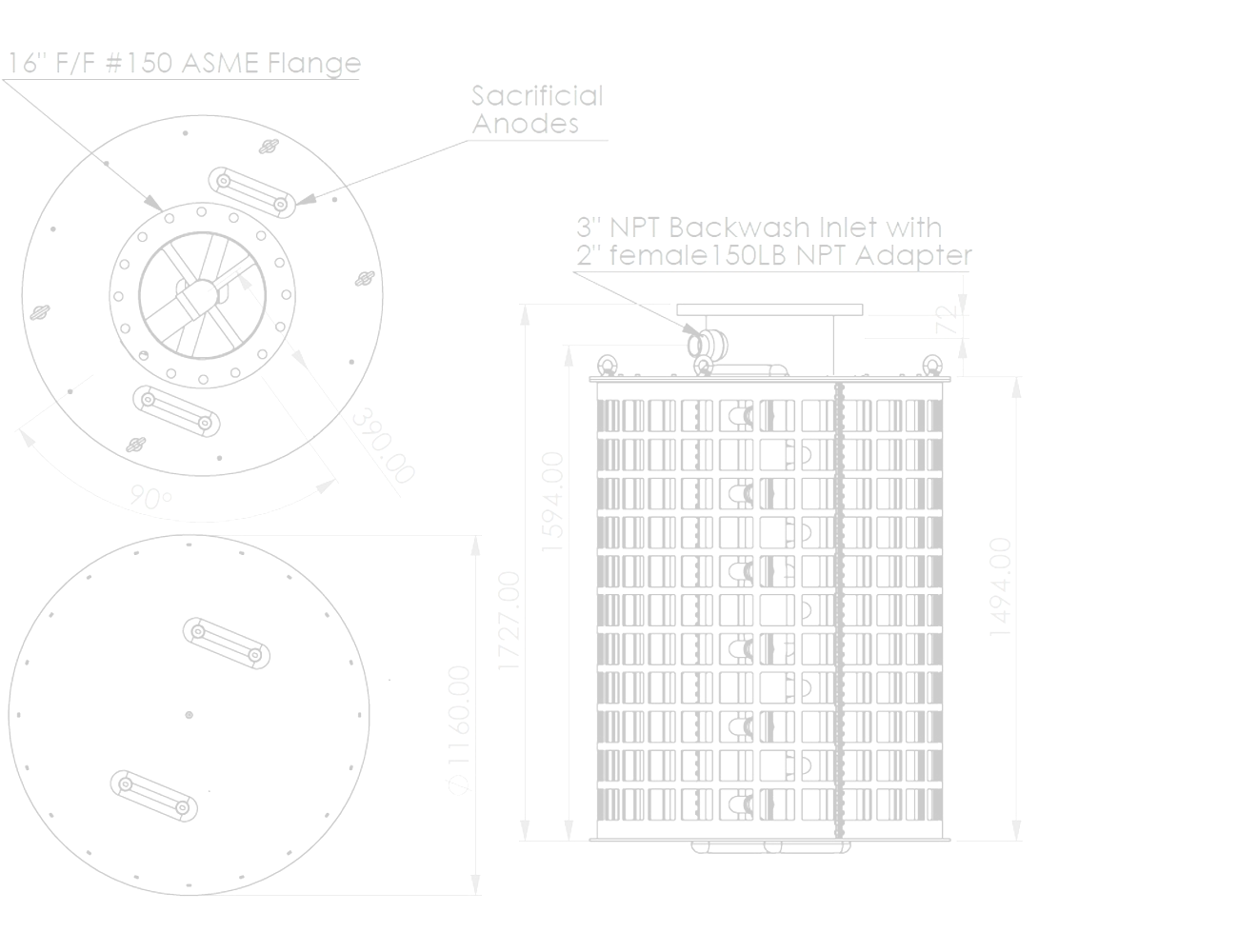
This website uses cookies to ensure you get the best experience. Learn more



